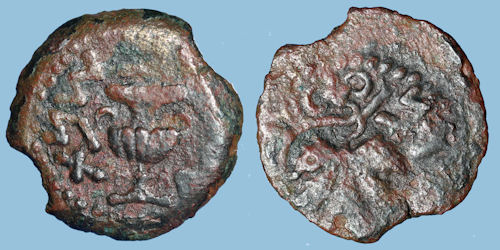1st JEWISH REVOLT
The Roman governors of Judaea were despotic and had little respect for the Jewish religion. In 66 A.D. a violent insurrection began against Rome, when Gessius Florus the Procurator demanded 17 Talents from the Temple. The rebels seized control of Jerusalem (Hierosolyma) and massacred the cohort of Roman infantry garrisoned there. An army of 30,000 under Cestius Gallus, the Roman Governor of Syria, quickly put down resistance in northern Judea and then marched on Jerusalem, assaulting the walls for eight days. Unable to penetrate the city, Gallus retired to Beth-Horon, where the rebels attacked him, inflicting a heavy defeat.
The Emperor Nero, hearing of Gallus' defeat dispatched Vespasian to his aid with three legions and auxiliaries (nearly 60,000 men). By the end of 67 A.D., Jotapata, Caesarea, Tiberias and Gamala had been captured, securing the whole of Galilee. Roman successes led to dissension among the Jewish leaders, and the fanatical Zealots under John and their allies, the Idumaean Jews of southern Judea, seized control of Jerusalem.
Vespasian then moved southward and recaptured of Gadara, Jericho and Emmaus, thus successfully isolating the Jewish rebels at Jerusalem by the close of 68 A.D. Before he could finish the campaign, however, Nero was overthrown and Vespasian was proclaimed emperor by his eastern legions in July 69 A.D. He then left for Rome, leaving his son Titus in command.
Titus took Jerusalem in September 70 A.D., after a seven month siege. The temple of Herod and much of the city was destroyed, and captives were shipped off as slaves. Simon was executed after participating in Vespasian's Triumph in Rome. The depiction of the ransacking of the temple can still be seen on the Arch of Titus in Rome. The fanatical Zealots held out for 4 years in fortresses at Herodium, Machaerus and Masada and the generals Lucilius Bassus and Flavius Silva continued operations against them. Masada, which had been fortified as a funk-hole for Herod the Great, was the last to fall (Spring 74 A.D.). After the Romans had built a massive ramp up the side of the rocky citadel, Masada's defenders committed mass suicide rather than risk falling into Roman hands.
|
